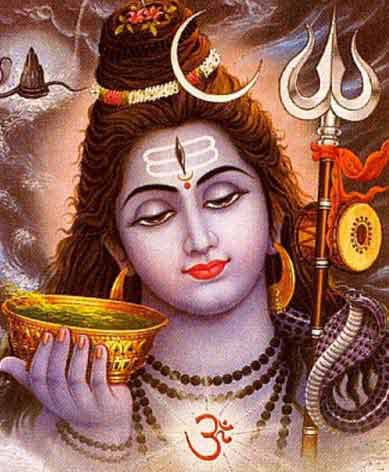
As the Mythology depicts, at the time of the churning of the ocean, (when) Shiva was in torment after ingesting the churned-out poison, Parvati offered him bhang to alleviate his pain. During Kali Puja in Bengal, the deity has to be offered cannabis and liquor among other things. In Sikhism, the Nihang warrior community uses cannabis.
By Nazarul Islam
Recall these American names? Ernest Hemingway, Sylvia Plath, James Joyce, Sigmund Freud, Pablo Picasso, Anthony Hopkins, Steve Jobs, Bill Gates, John Lennon, Brad Pitt, Elton John, Oprah Winfrey, Michael Phelps, Diego Maradona, and many others— they had something, very common in their lives. Perhaps, you may have already guessed it!
Even Barack Obama, in his 1995 memoir had not shied away from sharing with his readers, his experiments with marijuana, alcohol, and cocaine at some point in his life.
A few weeks ago, India’s monstrous news media had created a sensation— obsessing over the alleged drug consumption of 23-years old Aryan Khan, the illustrious son of India’s big screen mogul, Shahrukh Khan who had been booked under the NDPS Act, the present day cornerstone of India’s regressive drug policies. On bail, he stands relieved from his confinement and miseries.
Sameer Wankhede, the NCB Mumbai zonal director, and the country’s very own James Bond (as the TV media is intent on projecting) has apparently seized a mere 13 gm of cocaine, 21 gm of charas, and 22 pills of MDMA, from the cruise ship where Khan was arrested. Pertaining to this raid, the boastful gestures of the NCB chief on national TV is similar to something like the Chief of Army Staff announcing to the world about catching the thief who stole food from a colleague’s tiffin box.

In the milieu one does get reminded of the notorious British officer, Norman Pilcher, who pinned numerous celebrities, like the members of Rolling Stones and Beatles, on charges of possessing drugs. Pilcher employed deceitful means to carry out raids and frame them on drug charges for satisfying tabloid news, which he admitted in his memoir. On October 18, 1968, wearing a postman’s hat, Pilcher crashed into the Marylebone flat of John Lennon and Yoko and discovered that “they were stark naked!”
Pilcher eventually got charged for fabricating police diary entries and was jailed for four years. After being hounded by drug law enforcement agencies in July 1967, the Beatles published a full-page advertisement in The Times, signed by sixty-four members of the British civil society, to propose the decriminalization and legalization of marijuana. Within a week, questions were being asked in the House of Commons, prompting a raging public debate. Henceforth, there has been a sea-change in drug policies across the world.
The ‘Vedic’ ancient Indian medicine, written between the 3rd and 8th centuries BCE, Sushruta Samhita has prescribed cannabis as a cure for phlegm, catarrh, and diarrhea. In Atharva Veda, cannabis is one of the five most sacred plants on earth, referring to (and celebrating) it—as a source of happiness and liberation.
As the Mythology depicts, at the time of the churning of the ocean, (when) Shiva was in torment after ingesting the churned-out poison, Parvati offered him bhang to alleviate his pain. During Kali Puja in Bengal, the deity has to be offered cannabis and liquor among other things. In Sikhism, the Nihang warrior community uses cannabis.

It must be recalled that the US’s hardline ‘war on drugs’ policy, the NDPS Act went through a series of amendments in 1989 to formulate stricter laws against drug abuse and trafficking. This had included mandatory 10 years of imprisonment and even death sentence for repeat offenders. As legal commentators have pointed out, India’s NDPS Act adopts more severe measures for drug control than those provided by the UN Drug Control Conventions in 1961.
Slowly, our morality and desire were manufactured so that drinking alcohol was socially accepted, but smoking ganja was never acceptable because, it wasn’t fashionable. In the film Don, Amitabh Bachchan played a double role, the first one who is modern and suave, drinks fancy foreign liquor while the second one who is culturally backward drinks bhang.
And, this kind of duplicity is the fundamental paradox and moral position of the Indian State which has dictated its national drug policy since birth. Both are intoxicants but they are perceived differently in the eyes of India’s laws.
Tens of thousands had been jailed in the US and were forced to spend billions of dollars in the drug war, resulting in no impact on the supply-demand curve, rather, this menace increased at its pace—over the years.
Eventually, in November 2020, Oregon became the first state in the US to decriminalize personal use and possession of all drugs. Portugal was the first country to decriminalize the possession of all drugs for personal use in 2001.
In June 2019, the Malaysian government proposed decriminalizing drug use, putting “science and public health before person”
India can become a leading figure in Asia through its initiatives of revamping drug policies. Already, in 2018, SADA (Sikkim Anti-Drugs Act) was amended by discarding criminal or administrative penalties for drug use. A 2019 report published by the ministry of social justice and empowerment has addressed the State to take necessary steps for minimizing stigma and discrimination around drug addiction and provide health and welfare services to people affected by substance use rather than subjecting them to the criminal justice system.
The only section in the 50-page NDPS Act which deals with consumption is Section 27, for which the maximum imprisonment is up to one year. Aryan Khan is currently booked under it, among other sections. Technically, it has no real appeal in the current scenario—because anyone opting for treatment can get immunity under Section 64A of the same act. This section provides immunity not only for consumption but also for offences involving small amounts of drugs.
According to a study in the Lancet in 2010, alcohol has been deemed more harmful than heroin and crack when the overall dangers to the individual and the society are considered. And, we need not mention that it is still unlawful to drink alcohol in many states, including Mumbai, according to the Bombay Prohibition Act, 1949.
A substance being sold over the counter in one part of the world can get someone killed or imprisoned for life in another part. Perhaps, this may be one of the fallacies and contradictions of modern times. The desire of human beings to alter their consciousness is as primal as their desire for food and sex. In the context of history, human beings for the last 50,000 years have been voluntarily getting intoxicated by the available varieties of substances.
It is my humble belief that no person in civil society should be put behind bars for what they put into their body, by choice. The future of drugs is simply better drugs, not incarceration or death penalty or ostracisation by society.
Is it too much to ask in the present day scenario, that drug policies must be grounded in considerations of the scientific spirit, compassion, health, and human rights? And…certainly not for reasons of human prejudices, avarice, social or moral stigma!
[author title=”Nazarul Islam ” image=”https://sindhcourier.com/wp-content/uploads/2021/05/Nazarul-Islam-2.png”]The Bengal-born writer Nazarul Islam is a senior educationist based in USA. He writes for Sindh Courier and the newspapers of Bangladesh, India and America. He is author of a recently published book ‘Chasing Hope’ – a compilation of his 119 articles.[/author]